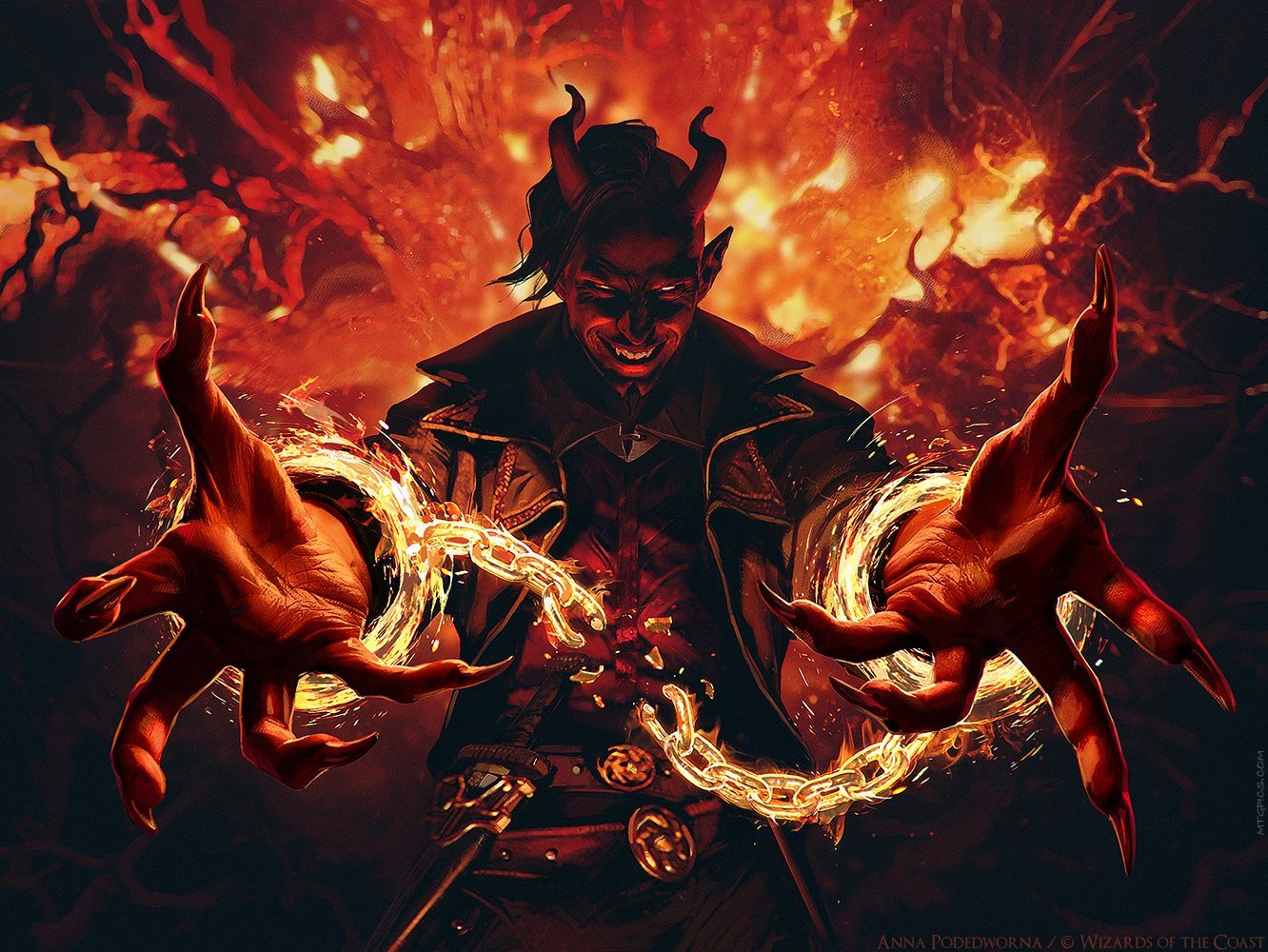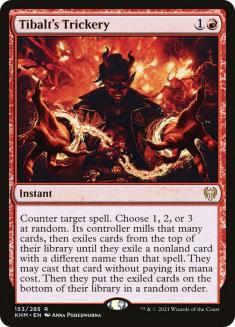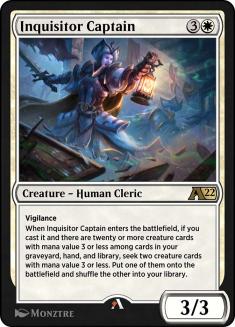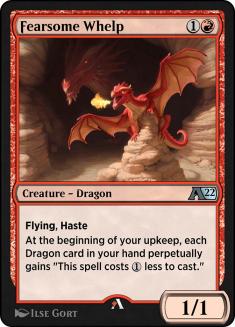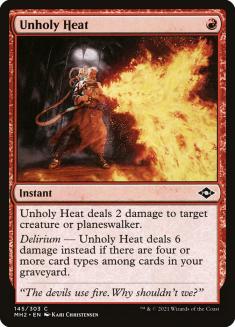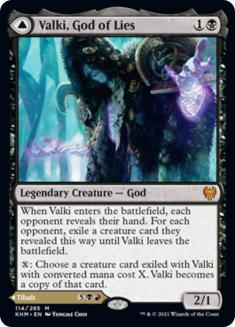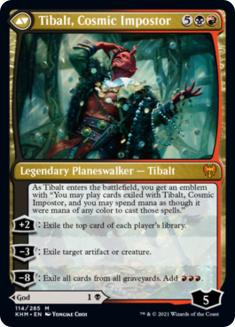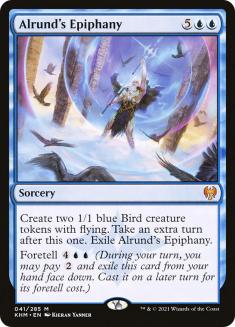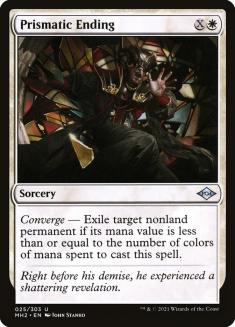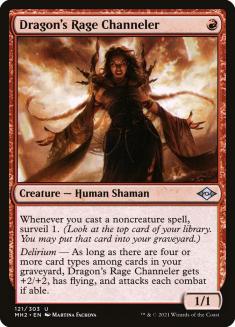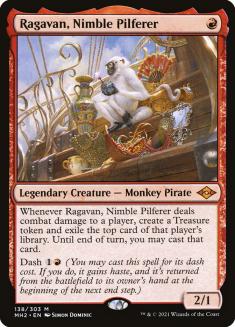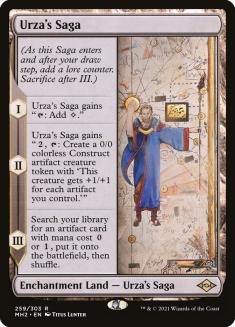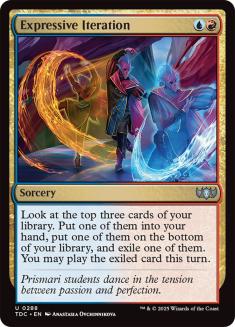With 2021 closing up shop in just a few days, I thought it time to reflect back on the goodies that Wizards of the Coast (WotC) brought us for Constructed! We’ve had a tough couple of years in regards to bannings, but 2021 seemed pretty stable as a whole. This year featured quite a few powerful sets, including Modern Horizons 2, so I expected huge waves and a banning or three to compensate. To my surprise, Modern ended up being the healthiest it has ever been, and I wouldn’t change a thing.
Modern isn’t the only Constructed format, and some of the cards we’re going to talk about today have had a major impact on Standard, Legacy, and even Vintage. These are the crème de la crème. Most of them are multi-format all-stars, reshaping decks and formats to revolve around them. Love them or hate them, these are my picks for the Top 8 cards from 2021.
Before we get into the list proper, I wanted to shine a spotlight on a few cards that barely missed the list or had a big impact on the game. We can only put eight cards on the list, but it’s important that we remember these near-misses for multiple reasons, including but not limited to destroying an entire format.
Tibalt’s Trickery
Tibalt’s Trickery is a farce. It’s a spell from a different game that somehow made its way into Magic, and subsequently wreaked havoc. Cascade had to change as a mechanic, and it needed to be banned in Historic for creating a ton of high-variance non-games. It is my least-favorite card printed in 2021 and I wish it didn’t exist. For all intents and purposes, it doesn’t really exist anymore, and I’m very happy about that.
Inquisitor Captain
I haven’t gotten to play much Alchemy since its release, but Inquisitor Captain is one of the coolest and most powerful cards to come out of the new batch of online-only cards. I have a lot of respect for sweet designs, even if I’m not a fan of separating digital and live play. The amount of pressure you can generate for just four mana is obscene, and all it requires is for you to build your deck to be relatively efficient. The deckbuilding requirement reminds me a lot of companions, specifically Lurrus of the Dream-Den, but without the degenerate part of starting in your opening hand. I do think Alchemy could be the future of Standard as we know it, so I’m optimistic about cool cards designed for Alchemy.
Fearsome Whelp
Much like Inquisitor Captain, Fearsome Whelp is a huge part of Alchemy. The Dragon decks I’ve been used to seeing all my life really struggled with having their spells be much too expensive to compete with efficient opponents. Dragons, while powerful, usually come in small numbers because their average casting cost is much higher than a traditional aggro deck’s curve. As a result, most Dragon decks become midrange, and are chock-full of removal to slow the game down.
Fearsome Whelp allows for a tribal theme that encourages you to be more creature-focused and less interested in interacting with your opponent’s creatures. That permanent cost reduction is unheard-of in traditional Magic, but is possible in Alchemy. Another home run of a design that allows for a different, bigger tribal strategy to thrive.
Unholy Heat
Unholy Heat should probably be on the Top 8 list, but I think it falls right at #9. While Unholy Heat is certainly an excellent Magic card, and is one of the most efficient removal spells ever printed, it’s the only card in the Top 9 that can be easily replaced. Fatal Push and Lightning Bolt certainly have their limitations, yet can get the job done if you really need some help. Unholy Heat is part of the “Unholy Trinity” of red spells printed in Modern Horizons 2 that have reshaped Modern. The other two are in the Top 8 proper, so we’ll cross that bridge when we get there.
And now, without further ado, here are my picks for Top 8 Constructed Cards from 2021!
8. Valki, God of Lies
Valki, God of Lies operated under similar conditions as Tibalt’s Trickery. Both “worked” with cascade, allowing you to have twelve or more virtual copies of that effect. Turbo Valki was born and Modern became unplayable for a month or more. Combined with Force of Negation and other free spells, Turbo Valki was Modern’s deck to beat, and continued to be a force in the format long after the rules changed.
But Valki wasn’t just a Modern staple. Alongside Emergent Ultimatum, Valki gave you damning piles for your opponent to choose from. For a card that specifically mentions not being able to grab planeswalkers, Emergent Ultimatum sure grabbed quite a few planeswalkers! For quite some time, Valki appeared in all manner of decks in multiple formats, acting as a solid disruptor early or a game-breaking planeswalker late. The little mini-combos with Bring to Light ended up making Valki an all-star, even if it has fallen off in popularity as of late.
Creatures (2)
Lands (20)
Spells (38)

7. Solitude
Solitude has become one of my favorite cards in Magic. It has a significant cost, even if that cost doesn’t require mana. For that cost, you receive the ability to remove just about any creature from the battlefield. Your opponent gains some life and we’re all a little bit dissatisfied. To me, the mark of a great card is one that leaves both players feeling like they didn’t pull one over on the other. A trade should be a trade, and the cost you pay should reflect that effect.
Solitude has many cool little combos, from Ephemerate to Persist. You can play it alongside Elementals to gain some minor advantages, or you can just play up to four copies in your Azorius Control deck. It’s an excellent role-player that creates pockets of potential interaction that didn’t exist before, allowing more midrange and control decks to interact with the opponents in the first few turns when mana constraints would be a severe issue.
Of all the decks that play Solitude, my favorite of the year was one that had very few tricks and ultimately just used it as a pitch-removal spell. In a deck featuring Yorion, Sky Nomad, the “pitch” cost of Solitude changes to “three colorless mana.” The modal casting cost generated by having a companion has become an integral part of Modern.
Creatures (20)
Planeswalkers (5)
Lands (28)
Spells (27)
- 1 Forest
- 1 Plains
- 1 Mountain
- 1 Island
- 4 Violent Outburst
- 4 Ardent Plea
- 4 Fire
- 4 Force of Negation
- 4 Crashing Footfalls
- 3 Prismari Command
Sideboard

6. Alrund’s Epiphany
I wrote about Alrund’s Epiphany on the day it was previewed earlier this year. I felt an instant draw to the power level, and fingered it for becoming a Standard staple. Alongside Emergent Ultimatum, you could create piles that made the game unwinnable for your opponent, and nearly every pile contained Alrund’s Epiphany.
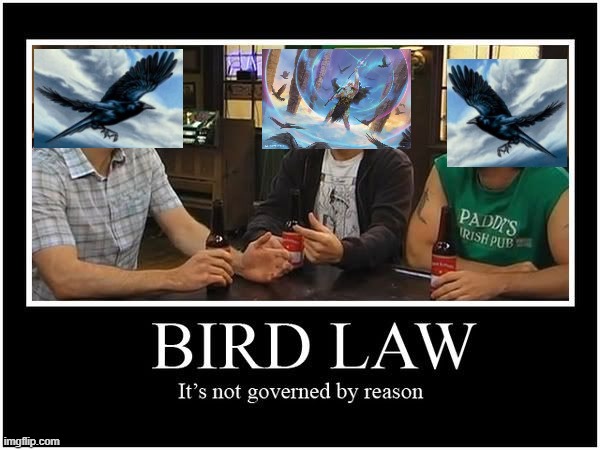
The following Standard format, and subsequent rotation, let Alrund’s Epiphany shine in a smaller format. I got really into Kaldheim Standard for a while, and nearly every deck I played featured Alrund’s Epiphany in some form or fashion. It has continued to dominate Standard since October, and is currently going through a new creative process on Magic Arena to alter or “nerf” cards that have become too powerful. The new version is much weaker, and I don’t think it will continue to prosper given those changes, but it certainly made its mark on 2021.
Creatures (12)
Lands (7)
Spells (41)

5. Prismatic Ending
Prismatic Ending might end up being the best removal spell of all time. The nature of older formats is to reduce the mana value of all your spells, boiling down each effect to its most efficient form. That means cards like Prismatic Ending will likely be able to answer whatever threat your opponent throws at you, so long as that threat sticks to the battlefield.
It exiles, it scales, and it provides white with an easy catch-all interactive spell that just so happens to feel like Swords to Plowshares most of the time. In Modern, decks that can’t normally destroy artifacts and enchantments regularly splash it. In Legacy, it offers multiple archetypes a type of maindeck interaction that’s rare. Abrupt Decay, for example, has been one of the better interactive elements for a very long time, but it was limited by costing two mana and its multiple colors. Prismatic Ending is white’s version of Abrupt Decay, but better, even though counterspells can tag it.
When playing with Modern Horizons 2 for the first time, only a few cards stood out as “broken,” and Prismatic Ending wasn’t one of them. As time passed, I came around on it being the best removal spell in the set, and quite possibly the best card in the set. These days, it’s showing up all over the place, but this deck shows just how much weight it can pull.
Creatures (20)
Planeswalkers (8)
Lands (29)
Spells (23)

4. Dragon’s Rage Channeler
And…
3. Ragavan, Nimble Pilferer
I put these two pretty high up on the list, and I wanted to talk about them in conjunction with Unholy Heat. If you’ve played Modern in the last six months, you should know just how much of an impact the “Unholy Trinity” has had on the format. The move for base-red decks from aggro to midrange is entirely due to these three cards. Unholy Heat gives you a one-mana removal spell that tags most threats. Both Dragon’s Rage Channeler and Ragavan, Nimble Pilferer are cheap and offer gameplay outside of “kill your opponent as quickly as possible.” As a result, we’ve seen a rise in midrange archetypes that have these three cards at their core, and Modern is better for it.
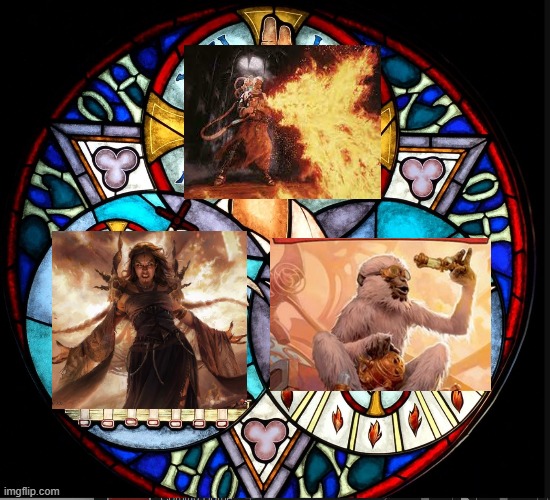
Dragon’s Rage Channeler offers card manipulation, flooding your graveyard with small-ball synergy or just finding that clutch removal spell to kill your opponent’s Ignoble Hierarch. Mishra’s Bauble helps fuel the fire, helping to turn on delirium while filtering a card for zero mana and replacing itself. Dragon’s Rage Channeler goes big rather quickly compared to how older delirium cards operated. That is entirely due to its self-fueling ability, but the fact that it only costs one mana is a huge plus. It is an all-star in Modern and Legacy.
Creatures (13)
Lands (18)
Spells (29)

The gameplay that Ragavan, Nimble Pilferer offers is significantly different. The landslide effect of gaining a mana and a card when you connect can be overwhelming. That’s a lot for a single mana worth of investment, and rather problematic when paired with cheap protection like Daze, Force of Negation, or even Spell Pierce. When you start popping your opponent’s lands via Wasteland, constricting their ability to play through your soft counters, you can imagine the frustration it causes. In many ways, it operates on the same wavelength as Deathrite Shaman, a creature often heralded as the best ever printed, and regularly referred to as a one-mana planeswalker.
I expect that Ragavan, Nimble Pilferer will get a ban in Legacy at some point, but it seems perfectly fine for Modern.
Creatures (16)
Lands (18)
Spells (26)
Sideboard

2. Urza’s Saga
I’m one of the many people who thought Urza’s Saga was going to bring ruin to Modern, Legacy, and Vintage. I can’t speak for how it is affecting Legacy or Vintage, but it has certainly pumped a lot of juice into Modern archetypes that are sorely missing Mox Opal. Some decks build around it, while others just splash a few tutor targets. You can use it as your primary source of damage or supplement a package that already uses artifacts as a resource.
When it was new, the play patterns were a little difficult to get used to. As we learned more about the powerful cards from Modern Horizons 2, we also figured out some potent counters to these new strategies. For example, the stock of both Engineered Explosives and Dress Down went through the roof. Those two cards alone helped contain Urza’s Saga and prevented it from becoming an overly dominant force in the format. Instead of an oppressive force, it’s one of the best artifact-themed cards of all time.
Of all the variants that used Urza’s Saga, my favorites must be the newer iterations of Jund that try to jam both Wrenn and Six into the same shell as a colorless land. The synergy between the two is obvious, but the trick is treating Urza’s Saga like a spell rather than a land. When you understand that caveat, the rest of the deck starts to make a lot more sense. Urza’s Saga feels like it should be limited to artifact-only decks, but this build showcases the versatility of Urza’s Saga, and how it can provide value and pressure in a midrange shell.
Creatures (12)
Planeswalkers (3)
Lands (21)
Spells (24)

The other dark-horse use for Urza’s Saga has become one of the best decks in Modern, and perfectly encapsulates every facet of what Urza’s Saga can do.
Creatures (21)
- 4 Ornithopter
- 3 Burrenton Forge-Tender
- 4 Stoneforge Mystic
- 4 Puresteel Paladin
- 4 Esper Sentinel
- 2 Sanctifier en-Vec
Lands (23)
Spells (16)

1. Expressive Iteration
The most influential card of 2021 has to be Expressive Iteration. This is another card I wrote about shortly after it was released to the public, and one I pegged as being heavily influential in a variety of formats. I even wrote a follow-up article on “how to cast Expressive Iteration,” likening it to Brainstorm in difficulty and complexity. At the end of the day, Expressive Iteration has touched every format from Standard to Vintage, and reshaped many in favor of the Izzet clan.
The biggest “aha” moment was when Gerry Thompson pointed out that it could play lands. Cards like Expressive Iteration often prevent you from doing exactly that to help balance the card advantage aspect. For two mana, Expressive Iteration allows you to dig for a key spell and a land, just so long as you haven’t played a land for the turn yet. While it costs two mana, the number of Expressive Iterations cast on the second turn has to be a tiny fraction of the number cast on three or four. Getting that extra land for free is a huge boost to resource development, with a low cost compared to similar effects in that vein. It’s not hard to turn Expressive Iteration into a better version of “draw two cards,” which is practically unheard of at two mana.
The most important part of Expressive Iteration, for me at least, is that it doesn’t create unfun games of Magic. Powerful cards that create vortexes of advantage on the battlefield are terrifying, and hard to claw back from. Expressive Iteration offers some old-school card advantage, which has been sorely lacking over the last five or so years.
Creatures (8)
Lands (9)
Spells (43)

Izzet has always thrived with the right velocity spells. Decks trying to trade one-for-one on removal tend to falter when they don’t have efficient card advantage. Izzet Dragons ultimately thrived specifically because it had access to cheap ways to replenish those resources. Yuta Takahashi took down Magic World Championships XXVII with his take on Izzet Dragons featuring four copies of Expressive Iteration, but nearly every format currently features an Izzet deck of some kind that perfectly utilizes Expressive Iteration. It’s not hard to do, and that’s the mark of a great card.
Final Thoughts
This year of Magic was one of my favorites in recent memory. Modern Horizons 2 brought many cool new cards to the forefront of Modern, and none of them have required a banning to “fix” things.
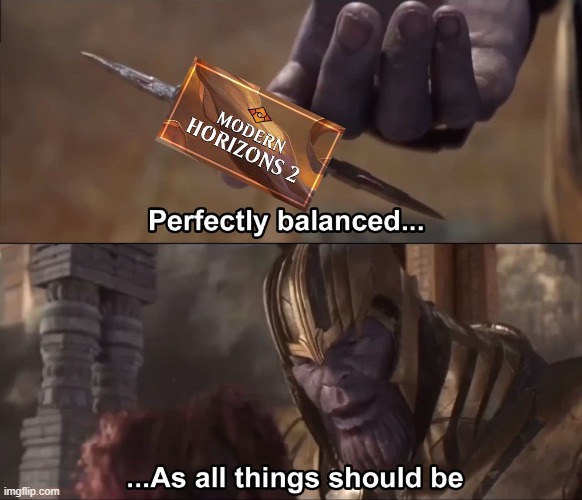
While I didn’t play much live Magic, the new SCG CON events next year mean I might be dusting off my deck boxes and taking my talents on the road. If Izzet continues to be a dominant force in virtually every Constructed format, I like my chances of success, even if I am an old boomer with a lot of complaints and even more back pain. To say I’m looking forward to the grind again would be an understatement.
This diverse list of cards represents the best of the best that 2021 had to offer, and I haven’t seen a cooler collection that I was proud to play with in quite some time. There were very few bans, and fewer disruptions in tournament play than we’ve seen in years. Modern is the best it has been in a long time, and it is all thanks to that influx of strength from Modern Horizons 2. The key to that success is having a good mix of threats, answers, and unique cards that offer a diverse spread of gameplay and interaction.
I’m looking forward to everything 2022 will bring. See y’all next year!

